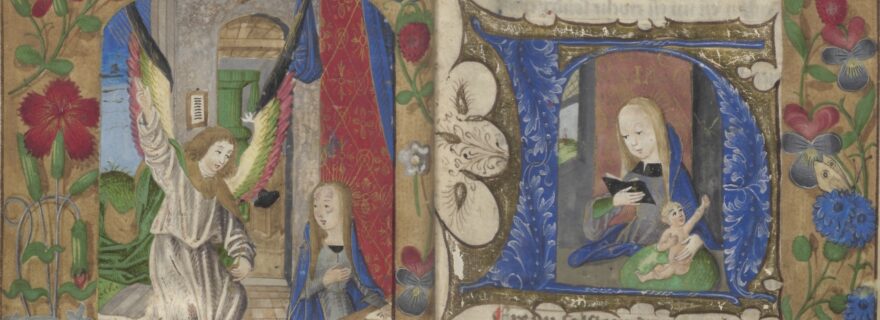Leiden's medieval manuscripts online: An update
Erik-Jan Dros, project officer on the ARMA (Art of Reading in the Middle Ages) project, takes us through the developments in the digitisation of the medieval manuscripts in Leiden University Library's collection which took place during 2021.
As the end of the year approaches, I wanted to give a small, Christmas-themed, update on the digitisation of the Leiden medieval manuscript collection. Already quite a number of digitised manuscripts can be found online, as you no doubt already know. Apart from the circa 410 manuscripts from the Vossius collection, which were digitised by Brill (the codices Latini and Graeci et Miscellanei), at the moment of writing 529 manuscripts are digitised and available in open access in our own Digital Collections, including both manuscript books as well as a number of smaller fragments.
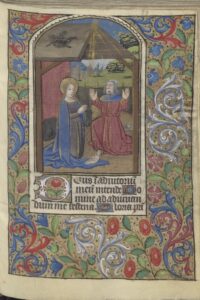

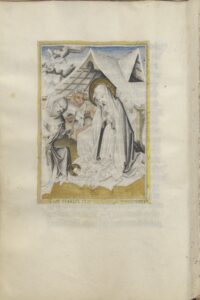

One great asset of digitisation is the fact that it is becoming easier and easier to compare items that are kept by different institutions. Using a IIIF viewer such as Mirador, items can be brought together in virtual libraries and collections, making it possible to make new connections between materials of various institutions. With regard to Leiden's medieval manuscripts, two projects must at least be mentioned which are enabling links to be made between our collections and those of other libraries. Since the beginning of this year, the Leiden manuscripts can also be found in the portal of Biblissima, in which manuscripts and early printed books from various institutions throughout Europe are brought together.
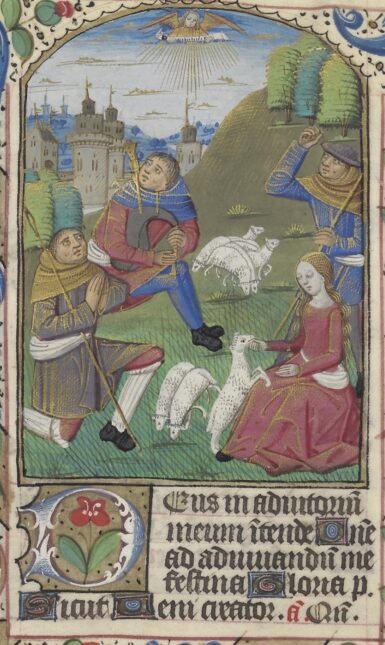
The other project is still being worked on. Leiden University Libraries is one of the partners of The Art of Reading in the Middle Ages project (ARMA). The seven partners of this project – the Europeana Foundation, the National and University Library of Slovenia, Brugge Public Library, the Hunt Museum, Bibliothèque nationale de France, Staatsbibliothek zu Berlin, the National Library of the Czech Republic and UBL – will bring their digitised medieval manuscripts and early printed books (up to 1550) together in one Europeana portal. At the same time the items will be used to create educational resources (for primary, secondary and post-secondary education) and to engage a wider audience with the theme of reading culture in the Middle Ages. In the last months, the partners published a digital exhibition and a number of blogs on this theme, including a blog by Christoph Pieper of Leiden’s Classics department (writing on behalf of UBL) on Cicero’s legacy in medieval Europe. Together with (and presented by) Irene O’Daly of Leiden’s Book Studies department, we are working on eight educational videos about the materiality of the medieval book. They will be presented in February, so keep an eye on the UBL's social media!
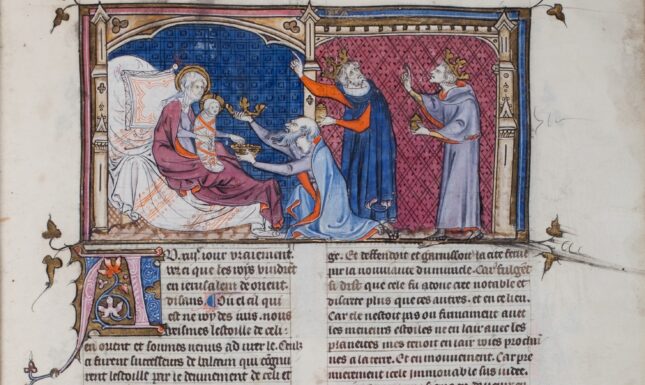

In addition, in the course of the coming months Leiden's digitised manuscripts will be integrated into the Europeana portal. Considering this integration, a large number of medieval manuscripts have been digitised. Since last January, 110 new digitised manuscripts have been uploaded in Digital Collections and an additional fourteen will follow in the first weeks of January! You can get a taste of some Christmas highlights of our collection from the images added to this post.
Although studying the digital copies pales, of course, in comparison with working with the real thing, there are also a number of big advantages to working with digitised manuscripts. Apart from the fact that the digital versions are accessible day and night, it becomes much easier to look in detail at the folios, while at the same time the contextual information of the catalogue entry and other metadata is right at hand. Last month, André Bouwman, curator of medieval manuscripts at the UBL wrote a blog about such a new opportunity: the website Digital Manuscripts in the Classroom, which was published on the web this year. The website (an initiative of Erik Kwakkel, formerly of Leiden University) provides three educational routes through the collection in which students are encouraged to examine various aspects of the medieval book.
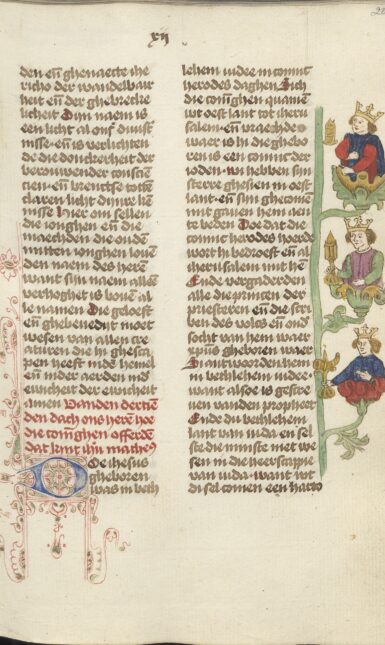

You would nearly forget, but a lot of examples of our collection can, of course, also be found on the Leiden Medievalist Blog itself (such as '"Red Riding Hood” and the wolf’ and ‘Doodling in the Middle Ages’) and on the Leiden Special Collections Blog (for instance ‘A fifteenth-century manuscript from The Hague’ and ‘A Medieval Matthäus-Passion’). Details of an object, whether a manuscript book or not, can be discussed and shown in a blog post, while the reader also has the opportunity to examine the object as a whole by just following the link to the digital version. And so while I hope the images in this blog post have given you a medieval Christmas feeling, I would very much encourage you to click through the links below and take a look at the medieval manuscripts ‘behind’ these illuminations. Enjoy exploring our collections during the holiday season!
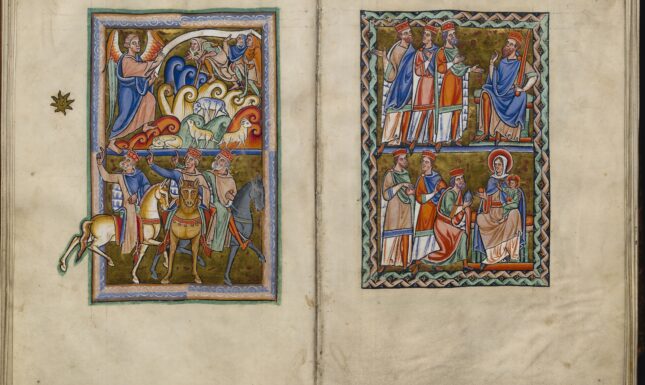

Details of manuscripts:
Leiden, UBL, BPL 76 A, Psalter, England, c. 1190 (IIIF manifest)
Leiden, UBL, BPL 224, Book of Hours, Netherlands, 1425-50. (IIIF manifest)
Leiden, UBL, BPL 2379, Book of Hours, N. France, c. 1500. (IIIF manifest)
Leiden, UBL, BPL 3055, Book of Hours, Netherlands, c. 1500. (IIIF manifest)
Leiden, UBL, LTK 258, Typologisch leven van Jezus, Netherlands, XVb. (IIIF manifest)
Leiden, UBL VGG F 3 A, Vincent of Beauvais, Speculum historiale, translated into French by Jean de Vignay (Miroir historial), 1332-35. (IIIF manifest)
© Erik-Jan Dros and Leiden Medievalists Blog, 2021. Unauthorised use and/or duplication of this material without express and written permission from this site’s author and/or owner is strictly prohibited. Excerpts and links may be used, provided that full and clear credit is given to Erik-Jan Dros and Leiden Medievalists Blog with appropriate and specific direction to the original content.


